Third Grade Manatee Curriculum—Lesson 4: Manatees Are Mammals; They Are Closely Related to Elephants
For other lessons in the Third Grade Manatee Curriculum series, click here.
Suggestions
Use this activity when teaching students classification—either to introduce or to reinforce characteristics of mammals.
Description
Students will learn characteristics of mammals and will use observation skills to list similarities and differences between manatees and their close relatives, elephants.
Objective
By the end of the activity, students will be able to list at least four characteristics of mammals and at least four similarities between manatees and elephants.
Standards Addressed
Florida—SC.3.L.15.1; SC.3.N.1.6
Vocabulary
mammals, vertebrates, warm-blooded, mammary glands, flipper
You Will Need
Copies of animal photographs (included in "Elephant and Manatee Photos" section of this lesson plan)
Strategy
1. Either introduce or ask students to help you list characteristics of mammals. For example, "What's special about mammals that makes them different from other types of animals such as reptiles, amphibians, fish, and birds?"
a. Mammals have hair.
b. Mammals give live birth (with some exceptions: the duck-billed platypus and spiny anteater both lay eggs).
c. Mammals nurse their young (mothers feed their babies milk from mammary glands).
d. Mammals are warm-blooded.
e. Mammals generally only have two sets of teeth throughout their life (manatees are an exception!).
2. What other characteristics are shared by mammals (but may also be shared by other groups of animals)?
a. Mammals are vertebrates.
b. Manatees breathe air.
c. Many other possible answers—for example, eyes, ears, and skin
3. Show students pictures of manatees (laminated handouts or projected). Ask them to look closely at the pictures to see if they can tell in what group of animals manatees belong. Have them explain why they choose their answers.
a. Manatees are mammals (pictures show hair around manatee's mouth; baby manatee nursing from mother).
4. Show class pictures of elephants. In what group of animals do elephants belong?
a. Mammals
5. Do elephants and manatees look similar? (The first response will probably be "No!"). Show students pictures of close-ups of manatee and elephant skin, flipper/foot, manatee lips/elephant trunk. Have the students list similarities.
a. Wrinkled, grey skin
b. Sparse hairs
c. Nails on end of flipper/foot
d. Eat plants
e. Use lips/trunk to get food into mouth
f. Small eyes
g. Nurse young under flipper/leg
6. Which of these are characteristics of mammals?
a. hairs, nursing young
7. What differences are there between manatees and elephants?
a. Manatees live in water, elephants live on land.
b. Manatees have a wide tail, elephants have a narrow tail.
c. Manatees have flippers, elephants have legs.
d. Manatees do not have hind (back) legs. (They do have hip bones, but no leg or foot bones).
e. Elephants have a trunk, manatees do not.
f. Elephants have large ear lobes, manatees do not.
g. Elephants can have tusks, manatees do not.
8. Explain to the class that elephants and manatees are thought to have evolved from the same ancestor. Ask them why they think elephants might have developed these different characteristics. (You might break the class into small groups and give each group one characteristic and some reference materials—perhaps Internet access. Then have them discuss the characteristic and write down their theory about why the characteristic was developed. Afterward, they can present their theory to the class for further discussion.)
a. Manatees have a broad tail that provides power to help them swim. Elephants do not need to be powerful swimmers, and a wide tail would be heavy for them to carry around.
b. Manatees use flippers to steer. Elephants must be able to hold up their heavy body and walk around on land, so they need larger, sturdier legs.
c. Manatees do not need rear legs, elephants do. If elephants didn't have rear legs, it would be very difficult for them to walk!
d. Elephants use their long trunks to reach their food, which may be tree branches or may be on the ground. Manatees eat plants that are underwater or floating, and they can easily get their food. A trunk would make it harder for manatees to swim.
e. Elephants use their large ear lobes to help them cool down. Their ears contain many blood vessels that carry warm blood. Because the blood vessels are close to the surface of the skin, heat can be transferred to the air, and that makes the elephant cooler. Manatees live in water, which helps them cool down. Besides, large ear lobes would get in the way when a manatee is swimming.
9. Optional: Print out the following list of characteristics. Have students assign each characteristic to the appropriate category—elephants only (E), manatees only (M), or elephants and manatees (E+M).
Manatee and Elephant Photos
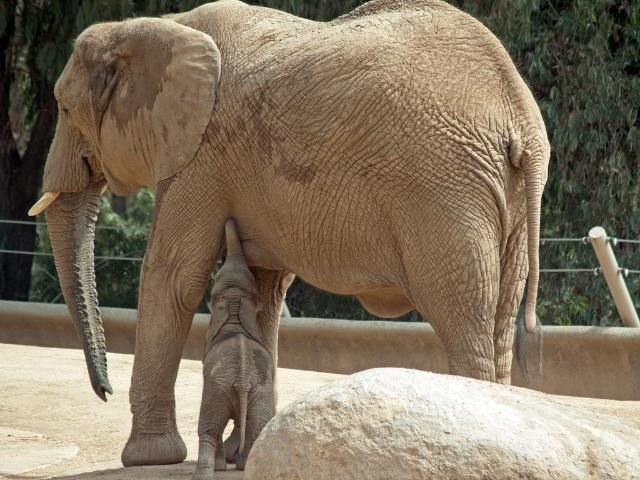
Credit: majunznk, Flickr
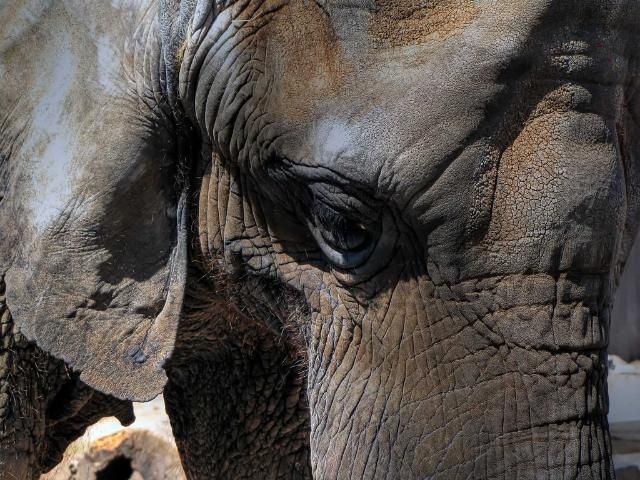
Credit: Phillip Martyn, Flickr

Credit: Donna Brown, Flickr
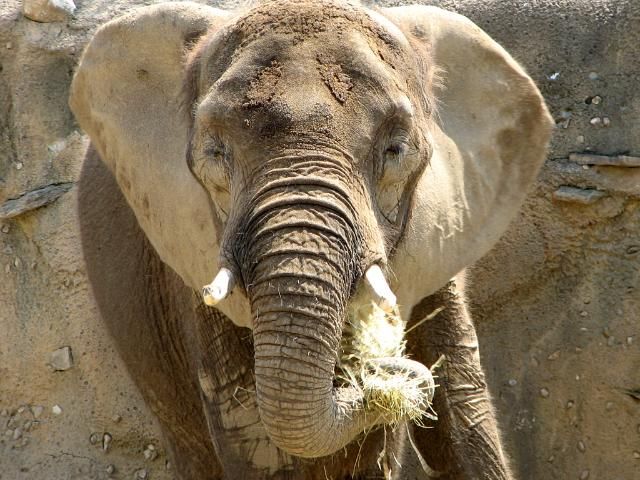
Credit: Alix Clinkingbeard, Flickr
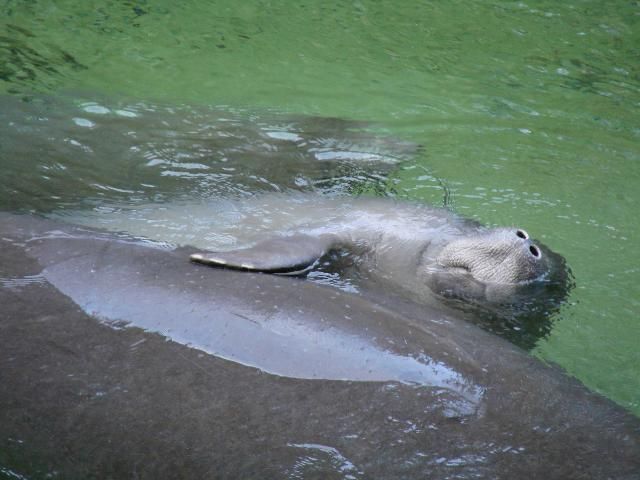
Credit: Maia McGuire, UF/IFAS
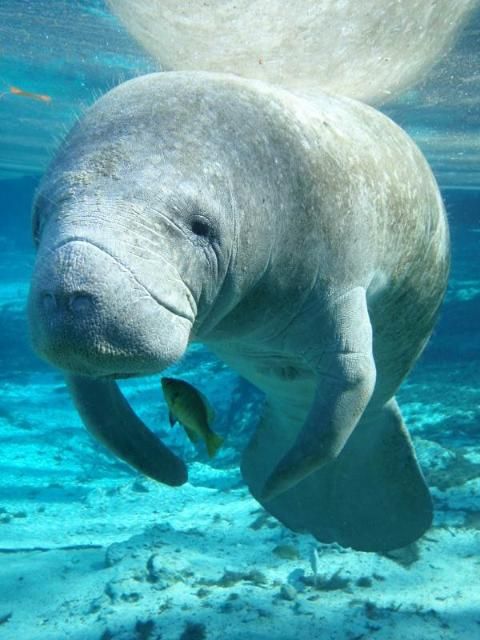
Credit: Tracy Colson, USFWS
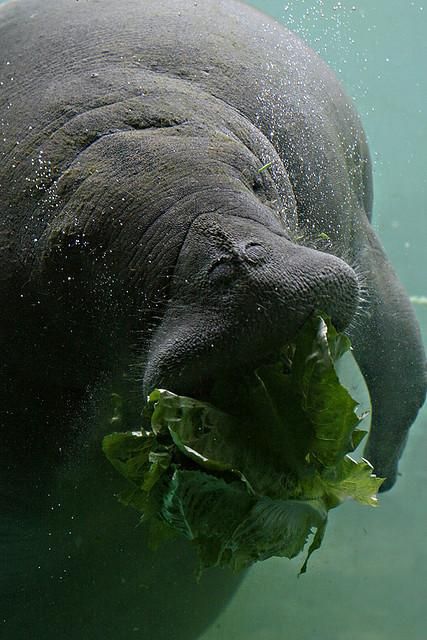
Credit: windy234, Flickr

Credit: David Hinkel, USFWS

Credit: Maia McGuire, UF/IFAS



